Cephalanthus occidentalis
A wetland shrub with aromatic globular flower clusters
Cephalanthus occidentalis buttonbush
This native woody shrub or small tree is a member of the coffee family and grows in a variety of wetland habitats that include swamps, marshes, bogs, floodplains and ditches. It can grow 3-12 feet tall and is multi-branched. It is known to grow out of water as deep as four feet, but is also found on the shore. It is noted for having swollen stem bases that make it useful for controlling erosion.
In mid-summer this shrub produces dense globular clusters of white tubular flowers about 1 to 1.5 inches in diameter. These form from June to September, depending on location. The individual flowers have 4 petals, 4 sepals and one long, thread-like style that give the cluster the look of a pincushion. The flowers have a jasmine-like scent and attract honeybees, butterflies and hummingbirds as pollinators. By October it forms brown ball-like cluster of fruits.
Each individual fruit is shaped like an upside-down pyramid and contains 2 nutlets. Waterfowl and shorebirds consume the fruit and seeds. Young twigs are green and 4-sided with elongated lenticels. As they age, the stems turn brown and become woody. The toothless leaves are opposite or whorled on the stem and are dark-green and lance-shaped.
The buttonbush is common in eastern and central United States and in scattered locations in the west. The species is widespread in Pennsylvania. It is a popular choice as an ornamental for native plant gardens, shrub borders, or wetland gardens. Wood ducks will roost in the branches of this shrub and many songbirds build nests in the dense thickets that form as the plant matures.
Humans cannot eat the plant because it contains the poison cephalanthin that causes vomiting, paralysis and convulsions. Nevertheless Native Americans used the roots and bark as a source of medicine.
Habitat & Range
Frequent in wetlands, swamps & bogs, sometimes lake/pond edges.
Present throughout the state.
| EMP: | OBL |
|---|---|
| NCNE: | OBL |
Phenology
Flowers mid June through early August.
Plant Codes
S-rank: S5 (Secure)
G-rank: G5 (Secure)
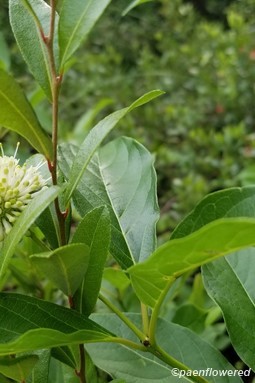
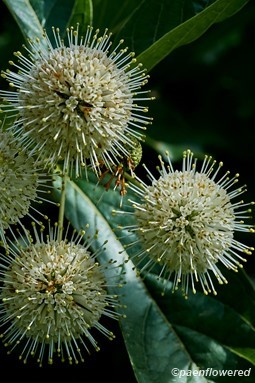
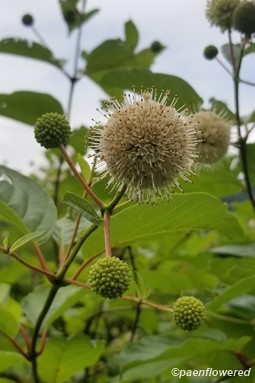
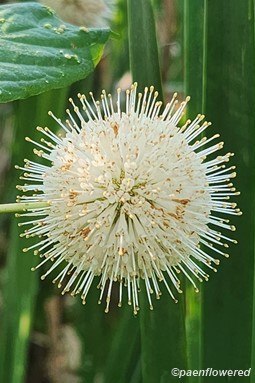
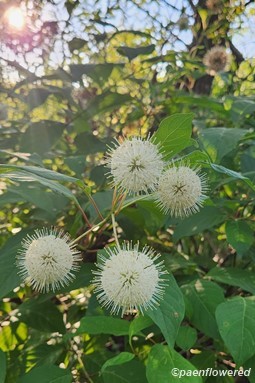
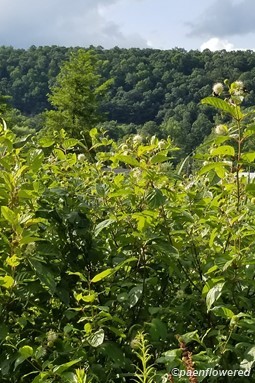
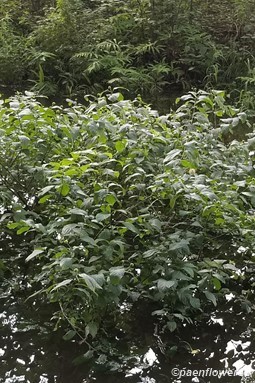
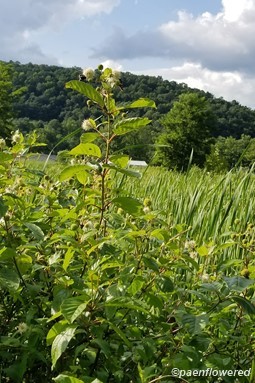
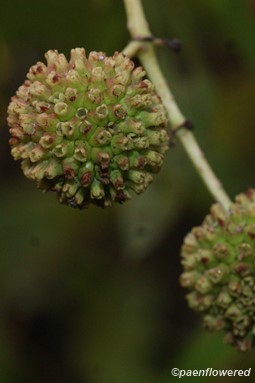
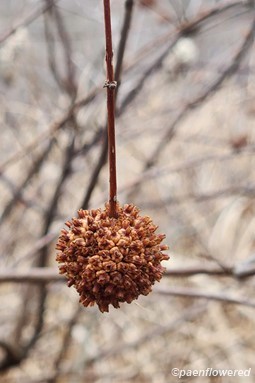

Comments
Have you spotted this plant in your area? We'd love to hear about your experience! Share your comments or questions about the plant below. Comments are moderated before posting.